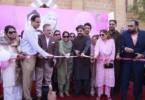Priti Gulati Cox
“Rescue us from the sub-jail – what you call the media ‘facilitation’ centre,” reads a sign held up by a pair of, what you, JatiIndia — my name for this country of jatis/castes — call “anti-national” hands. Who qualifies as a so-called anti-national? Anyone who resists and exposes JatiIndian supremacy within the boundaries of the country, and in occupied Kashmir.
“Fake News!” shout the Narendra Modi government and its minions when Kash-miri photojournalist Masrat Zahra and other reporters like her go about doing their job, documenting the violence of occupation and usurpation. And what qualifies as “fake news?” Any words and imagery that challenge and oppose supremacy and occupation.
If JatiIndia’s right-wing BJP government is going to prefix words like “news” and “national’ with words like “fake” and “anti,” then let’s demand that they also apply them to those that utter them: the government and anyone who is a perpetrator of violence and hate talk — ek sachh ka virodhi aur nakli deshbhakt (an anti-truth-cum-fake-patriot); and to the passive bystanders who just turn their heads away and stay silent.
What’s the godawful vision of these anti-truth-cum-fake-patriots? It includes rendering invisible the humanity and dignity of Kashmiris that predates the August 2019 revocation of Article 370, the loss of statehood and the division of their land into Bantustans. What followed in the sixteen months since and continues today resembles the Israeli laboratory of the Occupied Palestinian Territories, which include the West Bank, East Jerusalem, and the Gaza Strip. JatiIndia has now officially set in motion its profiteering agenda that by design attempts to “alter the demographic composition” of the region, “marginalize them in their own land, erode structures of self-government, disempower them politically and muzzle all voices of protest.”
Since August 2019, journalists like Zahra have been systematically targeted with, among other things, a months-long internet shutdown, mobile internet restricted to 2G speed, a government-sponsored media centre, “Cyber Police,” arrests, harassment, summons, intimidation, thrashings, draconian laws, and policies like the Unlawful Activities Prevention Act (UAPA) and the “Media Policy-2020.” According to National Conference and Peoples Conference spokesperson Imran Nabi Dar, “This policy obliquely stifles media’s right to ask tough questions and highlight lacunae in the administration. It seems to be a remnant of colonial-era censorships and will choke the already constrained space for free working of the press.”
I have been to jail many times because of reporting. I was summoned by the Cyber Police in March because of my tweet. I gave them in writing that I won’t make any mistakes from now on. Then there was an issue with Masrat Zahra, Peerzada Aashiq, and Gowher Geelani. They summoned many journalists after them. We are insecure in the field. — Peerzada Waseem, Kashmir News Observer, The Kashmir Walla, December 26.
26-year-old Zahra was charged in April with posting, yes, “anti-national” content on social media. She wasn’t arrested, but as she says, it feels like a “sword hanging on my head” and that the charge “was filed ‘to send a message’ that even a young female journalist would not be spared.”
Part of a continuing series, these JatiIndia Flags feature a face of resistance to upper-caste violence and injustice at the center of a modified flag of India. The color orange symbolizes Hindutva politics; blue—a color historically adopted by the Dalit movement—here represents the country’s Dalits, Kashmiris, Adivasis and other minorities; the bottom green bar embodies the regions ecological foundations endangered by the ideology of extractive capitalism; the circular image, replacing the Dharma Chakra (Wheel of Law) signifies the view through the crosshairs of a saffron (Hindu nationalist) gunsight.
The blue strip is done in chain-stitch embroidery, illustrating the long chain of atrocities that have been carried out by JatiIndia over the years on its own people, and the people of occupied Kashmir. Each blue chain-stitch, of which there are more than twenty thousand, represents a face of resistance.
This week’s flag features a portrait of Zahra and all that she stands for and for which she is a target: she’s a Kashmiri, a woman, a reporter, and she resists occupation.






